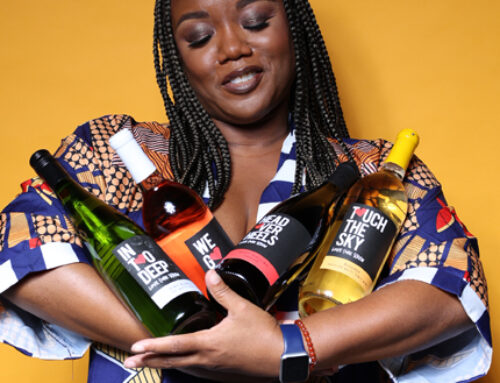If you’ve ever found yourself stuck in the “I’ll have the house white” or the “I’ll have what she’s having” comfort zone, you’re not alone.
It’s easy to be overwhelmed by the countless names and labels on the menu or on the shelves. But fear not, this guide will teach you everything you need to know to venture out into the wine aisle and pick up a bottle you enjoy.
Remember, wine should be fun and there are no right or wrong wines to like or drink. We’re just here to help you find what you like, so grab your corkscrew and let’s try some white wines!
Breaking Down the Basics of White Wine
We’re not going to bore you with the history, jargon and rules you may have heard before. But, wine labels can feel like a different language sometimes so understanding a few basics will just help you feel more comfortable reading them and determining if they sound good to you or not.
We’re going to go over 3 basics here: Body, sweetness and variety of grape.
Body
The body of a wine refers to its weight and texture in your mouth. Some wines feel heavier while others are lighter and more refreshing.
- Light-Bodied: Think delicate and refreshing.
- Medium-Bodied: Not too light or heavy and very versatile.
- Full-Bodied: Robust, bold, and leaves a lasting impression on your palate.
*Tip: The alcohol level on a wine label can give you some insight into the body of the wine – higher alcohol levels will be more full-bodied while lower alcohol levels tend to be light-bodied.
Sweetness
The sweetness of a wine ranges from sweet to dry – dry meaning no sweetness. Many wine labels will say “dry, off-dry, semi-sweet or sweet,” giving you a good idea of where they fall on the sweetness scale.
Variety of Grape
Different types of grapes have different flavor profiles and characteristics. This one is easy because for the most part the name of the wine corresponds with the type of grape it’s made from, unless it’s a blend. For example, Sauvignon blanc wine is made from Sauvignon blanc grapes.
We’ll go more into detail about some of the most popular varieties and flavor profiles below.
Selecting the Perfect White Wine
Now that you’ve got a taste of what to expect, let’s explore some popular white wine varietals.
Pinto Grigio (Pinoto Gris)
Medium-Bodied, Dry, Simple, Crisp, Neutral, Subtle Flavor Profile
Can have mild fruit flavors like apple, lemon, and pear.
This easy-drinking white wine is incredibly versatile and pairs well with an array of dishes. Its zesty acidity and fruit flavors make it an ideal companion for light and fresh flavors.
Grilled Salmon
Oysters
Lemon Basil Chicken
White Meats
Light Cheeses
Sauvignon Blanc
Medium/Light-Bodied, Dry, Acidic, Vibrant
A bit more tart than Pinot Grigio and can have herbaceous notes as well as tropical fruit flavors like passionfruit and citrus.
Sauvignon Blanc is a versatile grape planted worldwide. It’s excellent for pairing with bold and zesty dishes.
Fresh Seafood
Poultry
Crunchy Green Salads
Tangy cheeses (ie: goat cheese)
Riesling
Light Bodied, Semi-Sweet – Sweet, Versatile
Citrusy, fruity tones.
Offering a balance of fruit, acidity, and sweetness, Riesling is incredibly versatile and easy to drink.
General Tso’s Chicken
Spicy Enchiladas
Deviled Eggs
Salads with tangy vinaigrette dressings
Moscato
Light-Bodied, Sweet, Medium-Low Acidity, Fruity
If your sweet tooth drives your drink choice, Moscato is your go-to. This wine makes a fantastic match for dishes with spicy, bold and sweet flavors.
Asian Cuisine
Fruit Desserts
Strong Cheeses
*Tip: If you like Moscato you may also enjoy Niagara wines.
Chardonnay
Dry, Medium-Bodied, Moderate Acidity
Can have hints of lemon zest, green apple and grapefruit or oaked aromas with a buttery finish and notes of vanilla and spice.
Chardonnay, often known as the “chameleon” of white wines, is an excellent choice for beginners. Its adaptability and versatility makes it a great complement to many different dishes and flavors.
Poultry Dishes
Creamy Pasta
Cheese Platters
Seafood
Serving and Storing Wine
To truly enjoy your white wine, serve it chilled, ideally between 45°F and 55°F. If you don’t have a wine refrigerator, a few hours in the regular fridge or a wine chiller bucket with ice and water for about 30 minutes will do the trick. Once opened, keep the bottle chilled to maintain its delightful taste.
Cheers!
Remember, there’s no one-size-fits-all in the world of wine. The best white wine for beginners is the one you enjoy the most. You don’t need to be a master sommelier to pick out a bottle of wine that sounds good to you.
The ultimate rule for wine pairing and drinking: Pour what you enjoy regardless of what others may say is the right or wrong wine.
As you explore the different varietals, you’ll discover your own preferences and the perfect pairings for your favorite dishes. So pour a glass, toast to new adventures, and let’s savor the delightful world of white wine!






